Putting together the best trekking trails of Ladakh is not easy because if there’s a place on the planet where you feel like you’ve wandered into a living canvas—where wind, stone, sky and soul come together—it’s Ladakh.
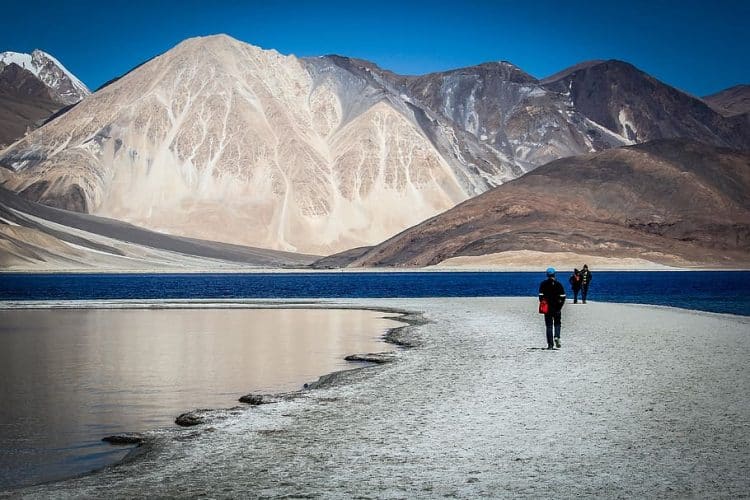
Here every trail here is a narrative that threads through Himalayan winds, ancient monasteries, nomadic fires, and peaks that scrape the stars. You could be a wide-eyed beginner craving your first high-altitude heartbeat, or a seasoned soul looking to taste the ice at 6,000 metres. Either way, Ladakh doesn’t disappoint.
Sham Valley: Where It All Begins
Let’s start with Sham Valley, lovingly called the Baby Trek of Ladakh. Don’t let the name fool you—it’s gentle, yes, but deeply rewarding. Perfect for families, first-timers, or anyone looking to pair their trekking boots with spiritual insight. The route takes you through charming villages like Hemis Shukpachan and Tingmosgang, where smiling locals still live with grace and grit in the lap of glacial streams that have turned barren land into blossoming oases.
It’s the kind of walk where you’ll pause for tea with monks, hear the flutter of prayer flags above tiny gompas, and fall into the rhythm of Ladakhi life one serene step at a time. Summer months, especially June through September, are your best bet to soak in the sun-splashed beauty without the chill snapping at your heels.
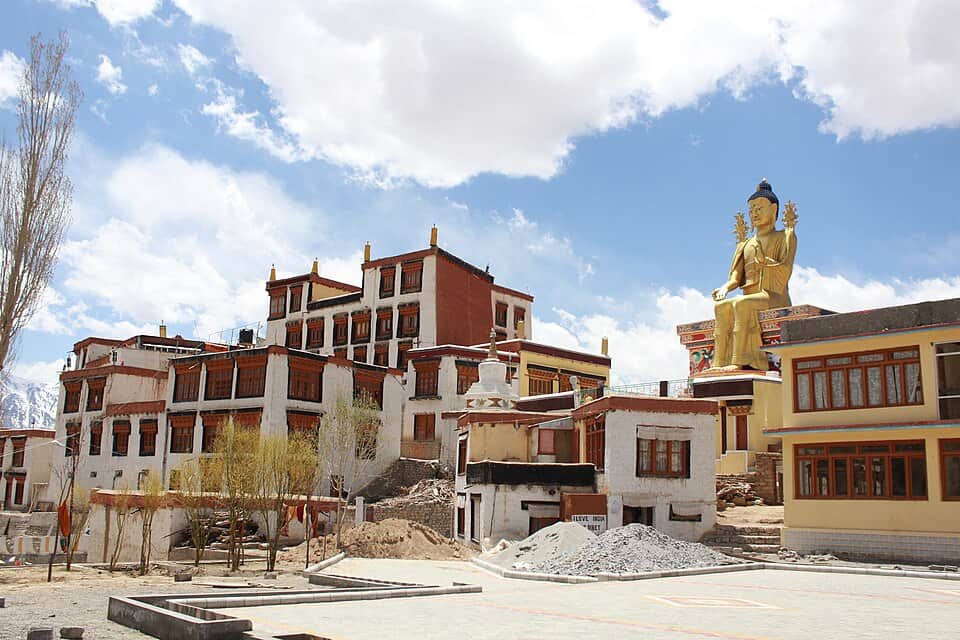
Sham Valley Trek — The Gentle Soul of Ladakh
- Trek Level: Easy
- Difficulty: 1/5 – Perfect for beginners and families
- Duration: 3 to 4 days
- Villages: Likir, Yangthang, Hemis Shukpachan, Temisgam
- Outstanding Views: Oasis-like greenery against stark mountain backdrops, golden fields of barley, Himalayan skylines
- Cultural Experiences: Homestays with Ladakhi families, traditional weaving demonstrations in Hemis Shukpachan, butter tea under apricot trees
- Food Halts: Homestays in every village serve thukpa, skyu, barley roti with local greens
- Temple Stopover: Likir Monastery – home to a massive gilded statue of Maitreya Buddha and a serene inner courtyard wrapped in chants
This trek is a tender introduction to Ladakh, where each step winds through villages that feel like chapters out of a living folktale. Monks pass you on muleback, prayer wheels spin lazily in the wind, and apricot blossoms nod at you from sun-drenched orchards.
Markha Valley: The Himalayan Classic
Next up: Markha Valley, the trail that has rightfully earned its rep as Ladakh’s signature trek. It’s not for the faint-hearted but certainly not out of reach either—call it the sweet spot of Himalayan hiking. From the shadow of Stok Kangri to the dramatic climb across the 5,260-metre Gongmaru La, the Markha experience is equal parts grit and grace.
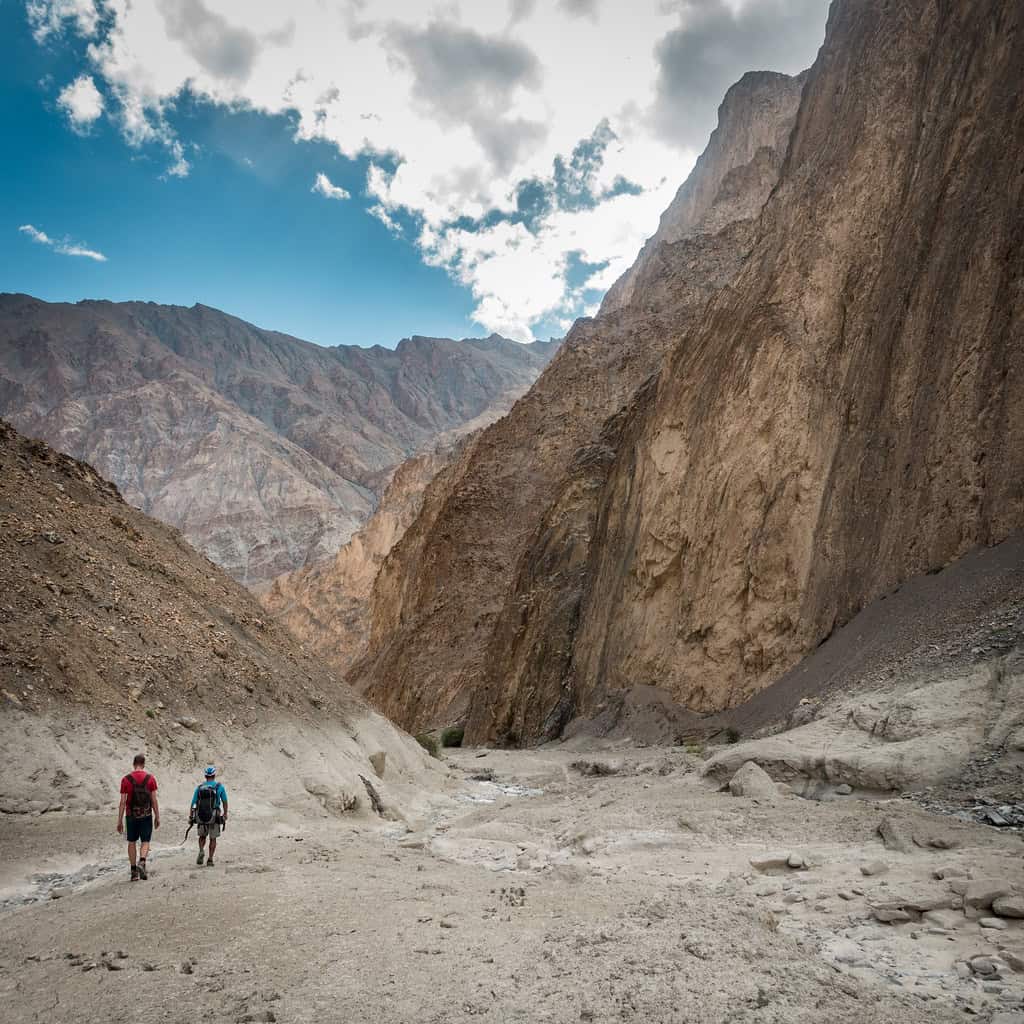
The landscape is a parade of soaring peaks, alpine meadows, fluttering chortens, and remote villages like Hankar and Markha where homestays welcome you with bowls of steaming thukpa and a side of mountain wisdom. Wildlife watchers can keep their eyes peeled for blue sheep and golden eagles, while culture lovers will fall for the vibrant murals in the tiny hilltop monasteries dotting the route. The best months? Late May to mid-September, when the rivers are crossable and the skies are cobalt clean.
Markha Valley Trek — The Himalayan Classic
- Trek Level: Moderate
- Difficulty: 3.5/5 – Demanding but popular
- Duration: 6 to 9 days
- Villages: Skiu, Markha, Hankar, Nimaling
- Outstanding Views: Crossing the 5,260-metre Gongmaru La with the Karakoram in full display, Stok Kangri views from Nimaling
- Cultural Experiences: Prayer-flag-lined bridges, ruins of Markha Fort, homestays where you can learn Ladakhi cooking, traditional hot stone baths in Hankar
- Food Halts: Home-cooked meals in every village—expect piping hot thukpa, tsampa porridge, and apricot jam with buttered roti
- Temple Stopover: Hemis Monastery – Ladakh’s largest monastic institution, famed for its sacred mask dance during the Hemis Festival
This is the trail that hooks you. With winding gorges, canary-yellow poplar groves, and a deep dive into Buddhist culture, it’s easy to see why Markha is on every trekker’s dream list.
Matho Phu: The Hidden Highland Secret
Now let’s talk about Matho Phu—lesser known, but a gem waiting quietly for the right kind of traveller. Think high-altitude meadows blooming wildly against dramatic backdrops, herds of yaks grunting across ridgelines, and the haunting silence only the Himalayas can deliver. Trekking here means reaching elevations above 4,100 metres and tackling a 5,150-metre pass, but it’s the intimate scale that charms you.
The trail loops close to Leh, which makes it surprisingly accessible, yet once you’re out there, it feels like a different planet. And if you’re lucky, you might get invited into a yak-hair tent for a taste of salty butter tea with the local Changpa nomads. Peak season is June through September, when the meadows are alive and the passes are clear.
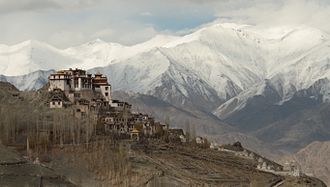
Matho Phu Trek — Meadows, Yaks, and Moonlight
- Trek Level: Moderate
- Difficulty: 3/5 – Less technical, more endurance-based
- Duration: 5 to 6 days
- Villages: Matho, Shang, Gyuncho La, Matho Phu
- Outstanding Views: Wide meadows scattered with wildflowers, dramatic cliffs, and views of Stok Kangri and the Indus valley
- Cultural Experiences: Interactions with local shepherds and Changpa nomads, seasonal yak festivals
- Food Halts: Camp-style cooking en route, with the occasional warm welcome into a yak-herder’s tent for butter tea and tsampa
- Temple Stopover: Matho Monastery – perched on a craggy outcrop, home to oracles who enter trance during the Matho Nagrang Festival
Matho Phu is the kind of trek where you’ll hear your own heartbeat. It’s quiet, rich in wildlife, and unexpectedly lush in the summer months, especially June to September.
Kang Yatse II: Your First Date with the Big League
Feeling ambitious? Meet Kang Yatse II—the western summit of the Kang Yatse massif and a dream goal for trekkers ready to flirt with mountaineering. Towering at just over 20,000 feet, this semi-technical peak (classified Alpine PD) is the gateway drug into high-altitude expeditions.
Starting from the Markha Valley, the route eventually branches into remote valleys before ascending icy ridges and scree slopes to the summit. If the skies are kind, the summit rewards you with jaw-dropping panoramas—K2, Broad Peak and the Gasherbrum giants in the north, and the Nun Kun and Zanskar ranges to the west. July through September is your window. The oxygen gets thinner, but the views? Unreal.
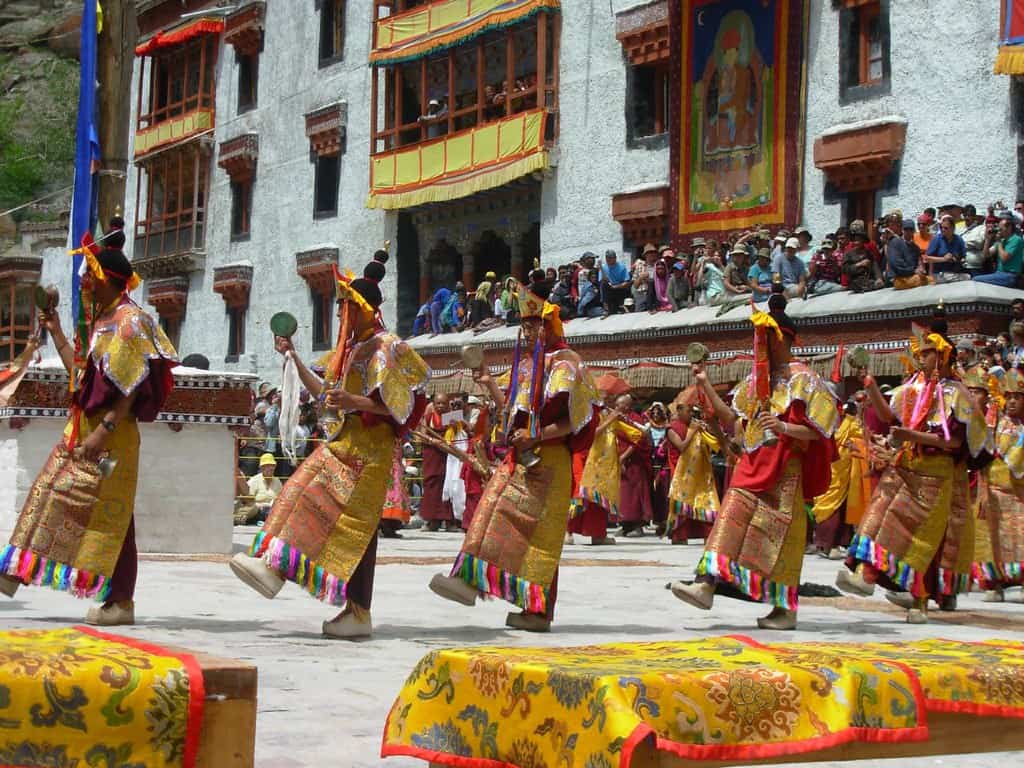
Kang Yatse II — Summit Dreams and Glacier Kisses
- Trek Level: Difficult
- Difficulty: 4.5/5 – High-altitude and semi-technical
- Duration: 9 to 12 days
- Villages: Skiu, Markha, Hankar, Nimaling (shared route with Markha before branching)
- Outstanding Views: Panoramas of K2, Gasherbrum Massif, Nun-Kun, and the Zanskar ranges on summit day
- Cultural Experiences: Pre-climb blessings at Buddhist stupas, ritual katas tied at prayer poles
- Food Halts: Nimaling camp cooks serve energy-heavy meals—momos, barley soup, rice with sautéed veggies
- Temple Stopover: Visit Hemis Monastery before beginning, as is traditional for spiritual protection
Kang Yatse II is your gateway into the world of mountaineering. With snowfields to cross and a summit above 6,200 metres, it’s where trekkers become climbers.
Parang La: A Journey Between Worlds
For those craving a true cross-cultural Himalayan epic, the Parang La trek offers a walk that follows the ancient trade route linking Spiti, Ladakh and Tibet. It kicks off at Kibber in Spiti—yes, snow leopard country—and then carves a route across deep canyons, wide glacier plains and the lofty 5,600-metre Parang La pass.
This trail isn’t for dabblers—it’s demanding, but packed with stories. You’ll cross the Pare Chu river, which uniquely flows from India into Tibet and back into India, and meet isolated shepherds who still trade with neighbouring valleys. It’s a physical and mental test, best done in the warm months of July and August when snowmelt makes the journey feasible.
Parang La Trek — Footsteps of Nomads and Traders
- Trek Level: Difficult
- Difficulty: 4.5/5 – Remote, strenuous, glacier crossings
- Duration: 10 to 11 days
- Villages: Kibber, Dumla, Largyap, Karzok
- Outstanding Views: Parang La pass at 5,600m, expansive glacier valleys, the surreal blue of Tso Moriri lake
- Cultural Experiences: Changpa nomads with Pashmina goats, trade route ruins, storytelling nights around campfires
- Food Halts: Campsite kitchens only; carry your own supplies. Nomadic tents offer occasional warm hospitality
- Temple Stopover: Key Monastery in Spiti—dramatic, cliff-hugging, and over a thousand years old
This is the trek for solitude seekers. Expect no phone signal, no shops, and no regrets.
Chadar Trek: The Icewalk of Legends
This one’s for the winter warriors—the Chadar Trek. Come January or February, the Zanskar River freezes into a sheet of ice (called ‘Chadar’ in Hindi), transforming into a shimmering, surreal path that locals traditionally used to reach Leh when summer roads were blocked.
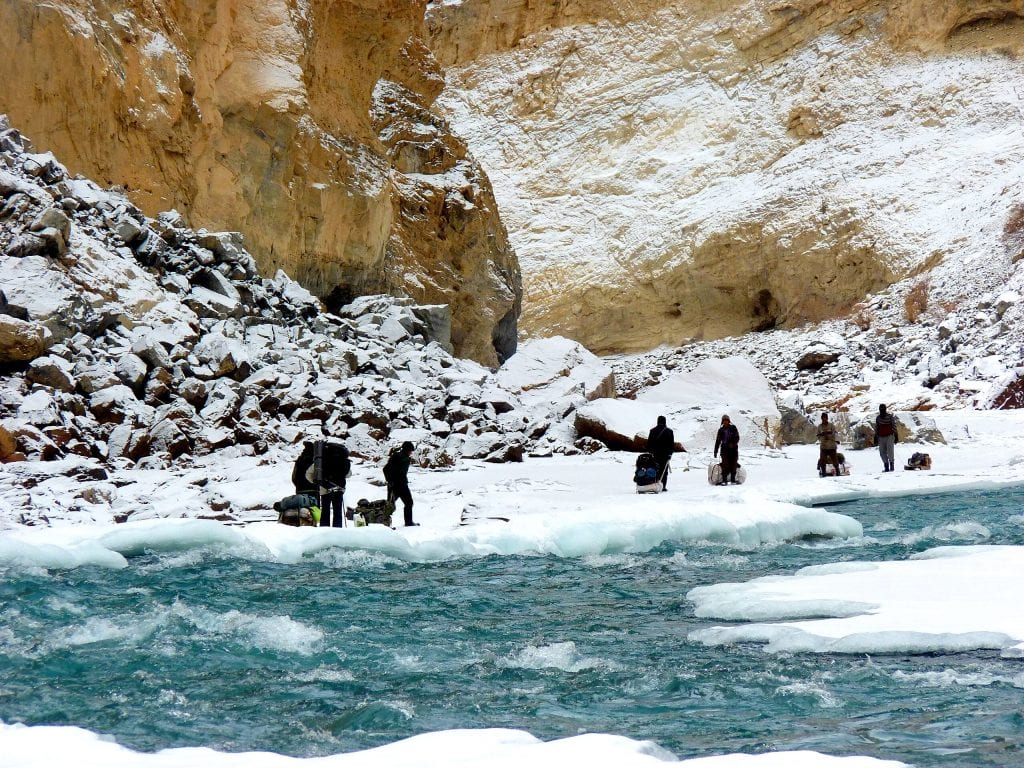
You’ll walk across frozen rapids, duck under icicles hanging like chandeliers from canyon walls, and sleep in caves that feel like portals to another age. The days are harsh, nights are colder, and yet, every crunch on the frozen river is unforgettable. It’s one of the most extreme—and stunning—treks in the Indian Himalayas. You’ll earn your stripes, and perhaps a few frost-kissed stories too.
Chadar Trek — Walking on Ice, Breathing in History
- Trek Level: Extreme
- Difficulty: 5/5 – Winter-only, frozen river, technical gear needed
- Duration: 8 to 9 days
- Villages: Tilad Do, Shingra Koma, Tibb, Nerak
- Outstanding Views: Ice caves, frozen waterfalls, the translucent blue of the Zanskar beneath your feet
- Cultural Experiences: Zanskari hospitality, traditional survival techniques, winter camps of the locals
- Food Halts: Cooked meals at tent campsites—staples like khichdi, spicy soup, and hot tea essential for the cold
- Temple Stopover: Nerak Monastery, clinging to icy cliffs, feels like a place carved out of time
If you’ve ever wanted to walk across a frozen river in -25°C, while icy wind howls through canyons—this is your jam.
Rumtse to Tso Moriri: Among Nomads and Moonlands
Ready for some soul-searching in the silence of the Changthang plateau? The trek from Rumtse to Tso Moriri is a wild, windswept passage through land that feels closer to the moon than the Earth. It’s high, remote, and largely untouched. As you walk, you’ll cross several passes over 5,000 metres, watch wild kiangs gallop through pastel-toned valleys, and sleep under a sky that makes you believe in galaxies.
But the heart of this trek lies in the human encounters—you’ll pass Changpa nomads living in their black tents, tending to pashmina goats and yak herds. They’ll invite you in, offer butter tea and barley porridge, and you’ll leave with a warm belly and a fuller heart. Best walked between July and September.
Rumtse to Tso Moriri — The Wild Nomad Trail
- Trek Level: Moderate–Difficult
- Difficulty: 4/5 – Multiple high passes over 5,000m
- Duration: 8 to 10 days
- Villages: Rumtse, Kyamar, Tisaling, Korzok
- Outstanding Views: The high-altitude turquoise expanse of Tso Moriri, untouched high-altitude desert
- Cultural Experiences: Tea with Changpa nomads, pashmina herding, local festivals near Korzok
- Food Halts: Campsite cooking, occasional food tents near Korzok village
- Temple Stopover: Korzok Monastery on the banks of Tso Moriri, built for reflection and resilience
It’s desolate, it’s divine, and it’s one of Ladakh’s most meditative routes—an emotional detox with altitude.
Lasermo La: The Ridge Less Travelled
Lasermo La connects the Nubra Valley to Leh, cutting through ancient routes that once saw traders with salt, wool, and secrets. The pass itself sits at around 5,600 metres, and while it’s tough, it’s also a quiet alternative to the crowded trails. The journey through Nubra itself is magical—think sand dunes, double-humped camels, icy rivers born in the Karakoram, and remote hamlets where prayer wheels spin endlessly in the wind. You’ll see fewer trekkers, more marmots, and feel like you’ve stepped into a postcard with every turn. July to September is your best window.
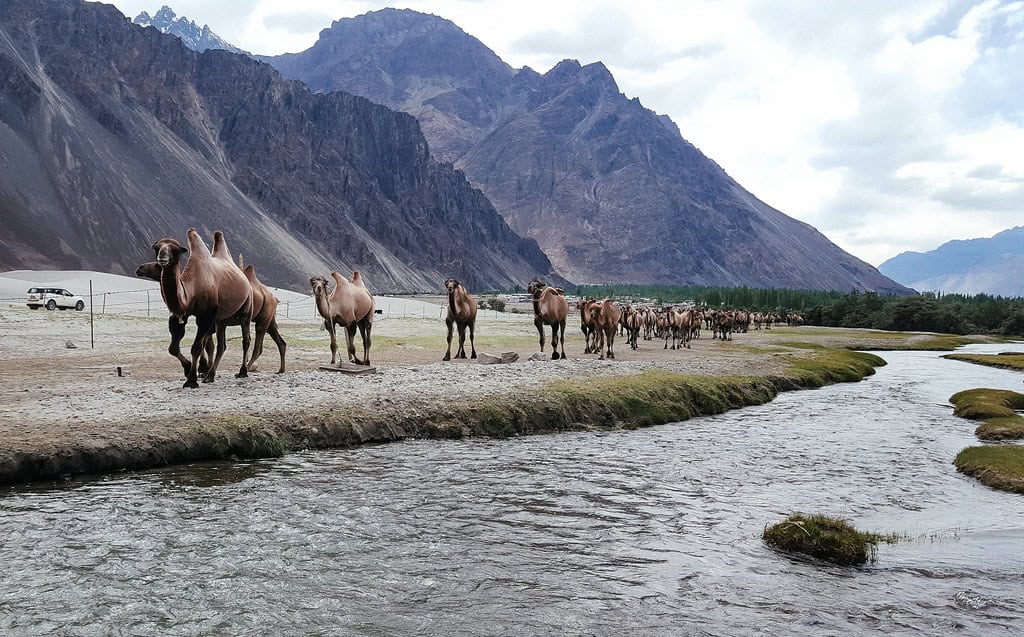
Lasermo La — Between Nubra’s Sands and Leh’s Skies
- Trek Level: Difficult
- Difficulty: 4/5 – Demanding due to steep ascents and a 5,400m pass
- Duration: 6 to 7 days
- Villages: Hunder Dok, Lasermo La Base, Phyang
- Outstanding Views: Hunder Sand Dunes from elevation, surreal pastels of Nubra Valley and glacier-fed peaks
- Cultural Experiences: Camel rides in Nubra, home-brewed chang (barley beer), Nubra festivals
- Food Halts: Home-cooked meals at Hunder Dok, simple packed lunches post-pass
- Temple Stopover: Phyang Monastery, known for its ancient thankas and annual festival
This route gives you a bit of everything—desert, glacier, spirituality, and storytelling in equal measure.
Stok Kangri: The Now-Closed Summit of Legends
Stok Kangri may be temporarily closed to preserve its fragile ecosystem, but it deserves a nod. For years, it was the ultimate trophy for trekkers looking to test their mettle at over 6,000 metres without needing ropes. The trail begins from Stok village, winds through glacier basins and barren ridges, and culminates in a summit push that separates dreamers from doers. Once reopened, it’ll no doubt return as the jewel in Ladakh’s crown.
It’s the kind of climb that doesn’t ask if you’re ready—it tells you. Standing tall at 6,153 metres, Stok Kangri used to be the Everest of Indian trekkers, a badge of honour for those craving the next step beyond treks. Although the journey begins gently from Stok Village, where you’ll pass barley fields and yak trails that seem to whisper secrets of the Himalayas, the trail wastes no time revealing its bite.
After Mankarmo, the air thins, the ridges sharpen, and your mental game becomes your greatest gear. At Base Camp, cradled beneath knife-edged peaks, trekkers gather for acclimatisation and anxious pep talks under starlit skies. Then comes the final summit push—midnight start, crampons crunching on ice, a slow, disciplined march to the top.
The views at the summit are transcendental. Think 360° Himalayan cinema: Karakoram in the north, Zanskar in the south, and the all-knowing silence of the high-altitude wind. On a clear day, you might even catch a distant silhouette of K2, shimmering through the atmosphere like a myth in the flesh.
Stok Kangri’s story has paused since 2020—the peak was temporarily closed by the Ladakh administration to allow for environmental recovery and to respect local religious sentiments tied to the mountain. But when it reopens, it’s bound to draw back every soul with unfinished summit dreams.
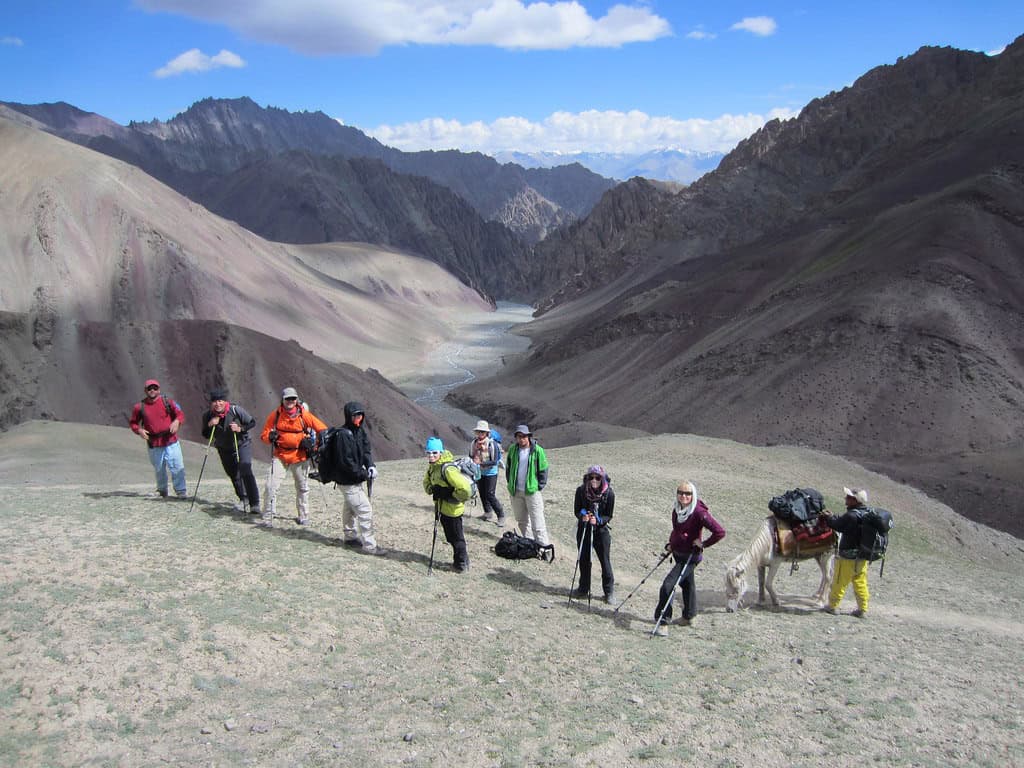
Stok Kangri — The Summiter’s Rite of Passage
- Trek Level: Challenging High-Altitude Expedition
- Difficulty: 5/5 – Steep climbs, glacial crossings, thin air, and summit altitude over 6,100m
- Duration: 6 to 9 days
- Villages: Stok, Mankarmo, Stok Kangri Base Camp
- Outstanding Views: Panoramic summit views of the Zanskar and Karakoram ranges, including distant glimmers of K2 and Nun-Kun
- Cultural Experiences: Pre-climb blessing rituals in Stok Village, interaction with high-altitude mountain guides (often monks in disguise)
- Food Halts: Base camp feasts of rice, lentils, boiled eggs, and herbal teas; simple snacks at Mankarmo with views of grazing blue sheep
- Temple Stopover: Stok Monastery – a 14th-century spiritual outpost housing ancient scrolls, a royal museum, and the statue of Avalokiteshvara
Trekking Stok Kangri was never just a hike but a full-circle experience. You walk in as a trekker. You walk out as someone different. The kind of different that only happens when you’ve seen the Earth curve beneath your feet.
Sustenance for the Soul—and the Stomach
Trekking in ladakh serves more than views. The cultural immersion—sharing a floor mat in a 300-year-old monastery, chatting with wrinkled grandmothers spinning wool, or joining monks during evening chants—enriches the trek beyond its physical journey. And then there’s the food. Whether it’s thukpa in a smoky kitchen, a hot bowl of skyu cooked with mountain veggies, or butter tea that tastes oddly comforting in thin air, Ladakhi cuisine is the quiet hero of your journey.
Final Descent: So, Which Trek Is For You?
There’s no single “best” trek in Ladakh. It’s about your rhythm, your appetite for altitude, your desire for solitude or celebration. Some walk to summit; others to connect. Some chase views, while others chase peace. But whichever path you choose, Ladakh gives you more than you ever thought you came for.
One step, one prayer flag, one breathtaking view — Be sure, Ladakh walks with you.
Read More: Latest




1 Comment